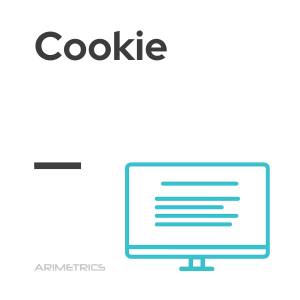
Definition:
A cookie is a small text file created by a website and stored on the user’s device while browsing. Cookies are designed to be a reliable mechanism for websites to remember status information, such as items in a shopping cart, or to record user browsing activity.
Cookies are essential to the efficient operation of many websites, as they allow us to remember relevant information about the user and their interaction with the site. Here is how they work: Each time a user visits a website, the browser stores cookies on the user’s device. These cookies contain small pieces of data that the browser sends back to the server each time the user reloads the site. This exchange of information allows websites:
- Remembering the user’s state: Cookies store information about the user’s state on the site, such as items added to the shopping cart, language preferences or display settings. This provides a more personalized and consistent user experience.
- Facilitate continuous navigation: By remembering the user’s previous actions, cookies allow for smoother navigation. For example, users can resume previous sessions without having to log in again or reconfigure their preferences.
- Support web analytics: Cookies collect data about user behavior on the site, such as pages visited, time spent on each page, and clicks on specific buttons. This information is necessary for website administrators, as it helps them understand how users interact with the site and optimize its content and structure.
- Storing user-entered information: Cookies may store data that the user has previously entered, such as passwords, addresses or credit card numbers, to facilitate future interactions. However, due to security concerns, it is important that this information be properly encrypted and protected.
History
Cookies were developed in 1994 by Lou Montulli and John Giannandrea, engineers at Netscape Communications. Their initial purpose was to improve the browsing experience by allowing websites to remember user preferences and manage session status, such as online shopping carts. This innovation allowed websites to become more interactive and personalized, marking a milestone in the evolution of the web. Evolution of cookies:
- Late 1990s: The use of cookies expanded rapidly, being adopted by other browsers and websites. However, this also raised privacy concerns, as cookies began to be used to track user activity online.
- 2000: The controversy over cookie privacy led to the creation of privacy policies and settings in browsers, allowing users to manage cookie storage.
- 2011: The European Union implemented the Privacy and Electronic Communications Directive, which requires websites to obtain user consent before storing non-essential cookies, marking a significant change in online privacy regulation.
- 2018: The entry into force of the General Data Protection Regulation(GDPR) in Europe reinforced the need for informed consent for the use of cookies, increasing transparency and user control over their personal data.
- Today: Cookies continue to evolve, with developments in alternative technologies such as local storage and first-party cookies, as browsers and legislators work to balance web functionality with user privacy.
The General Data Protection Regulation (GDPR) classifies cookies as follows:
- Strictly necessary cookies: Essential for the basic operation of the website, allowing navigation and use of its functions. They do not require the user’s consent, as they are essential for the requested service. Example: remembering items in a shopping cart or enabling login.
- Preference Cookies: These allow the site to remember information that changes the way the site behaves or looks, such as language or region. They require user consent, as they enhance the experience, but are not essential. Example: storing language settings or site design.
- Statistical (analytical) cookies: They help to understand how visitors interact with the site by collecting anonymous information. They require the user’s consent, as they are not essential to the operation of the site. Example: tracking the most visited pages and the time users spend on the site.
- Marketing Cookies: These are used to track visitors in order to display relevant and attractive ads. They require the user’s explicit consent due to their intrusive nature. Example: customizing advertising based on browsing behavior.
- Third-party cookies: Set by a domain other than the website the user is visiting, often for advertising and analytics. They require the user’s consent, as they can track behavior across multiple websites. Example: cookies from social networks or external advertisers.
In addition to the classification according to the GDPR, cookies can be classified in various ways based on different criteria:
According to duration
- Session Cookies: These are stored temporarily in the browser’s memory and are deleted when the user closes the browser. Example: remembering the items in a shopping cart during a single visit.
- Persistent Cookies: They remain on the user’s device for a defined period of time, even after closing the browser. Example: storing the language settings of a website.
According to origin
- First-party cookies: Set by the domain of the website that the user is visiting directly. Example: cookies that manage user authentication on a website.
- Third-party cookies: Set by a domain other than the website that the user is visiting. Example: cookies from advertising services or social networks.
